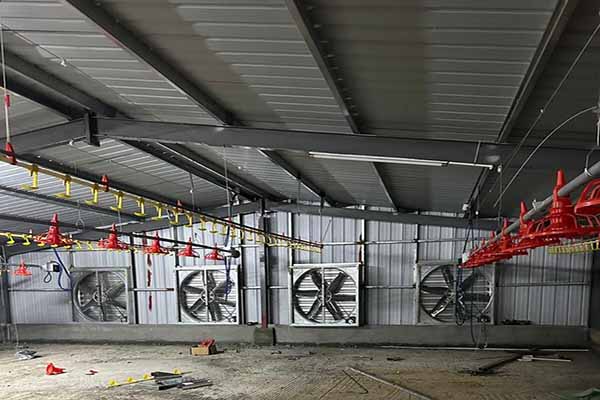Improving Egg Production Rate in Uganda’s Chicken Farms: Expert Strategies and Professional Equipment Knowledge
Time : 2025-06-25
Introduction:
The poultry industry, particularly egg production, plays a significant role in the economy of Uganda. With the increasing demand for eggs, it is essential for chicken farms to optimize their production rates to meet the market demands efficiently. This article focuses on expert strategies and professional equipment knowledge to improve the egg production rate in Uganda’s chicken farms.
1. Understanding the Challenges:
Before delving into the strategies, it is crucial to understand the challenges faced by chicken farms in Uganda. Limited access to quality feeds, lack of proper management techniques, inadequate infrastructure, and the absence of professional equipment are some common issues that affect egg production.
2. Feeds and Nutrition:
a) Quality Feeds: Providing balanced and nutritious feeds is essential for optimal egg production. It is crucial to use quality feeds that contain adequate amounts of protein, amino acids, vitamins, and minerals. Consultation with a poultry nutritionist can help develop a balanced diet tailored to the specific needs of the flock.
b) Feed Conversion Ratio (FCR): Monitoring the FCR is vital to evaluate the efficiency of the feeding program. Lower FCR indicates a better utilization of feeds, leading to higher egg production. Implementing strategies such as feed additives and proper feed management can help reduce FCR.
3. Management Techniques:
a) Housing and Environment: Ensure that the chicken farm provides a suitable environment for the birds. Proper ventilation, lighting, and temperature control are essential for maintaining the health and well-being of the flock. Use appropriate housing systems, such as deep-litter or cage systems, based on the farm’s size and budget.
b) Biosecurity Measures: Implement biosecurity measures to prevent diseases and maintain flock health. This includes proper cleaning and disinfection protocols, isolation of sick birds, and regular vaccination programs. A healthy flock contributes to higher egg production.
4. Professional Equipment Knowledge:
a) Egg Collection Systems: Implementing efficient egg collection systems minimizes breakage and ensures timely delivery. Consider using conveyor belts, egg washing machines, and sorting equipment to optimize egg collection and reduce waste.
b) Hatchery Equipment: High-quality incubators, setters, and hatchers are essential for successful hatching. Invest in professional equipment that provides precise temperature, humidity, and ventilation control. Regular maintenance and calibration of these machines are crucial for optimal performance.
c) Feed Processing Equipment: Utilize professional feed processing equipment, such as hammer mills, mixers, and batching systems, to ensure the quality and uniformity of the feeds. Proper feed processing enhances feed conversion ratios and overall egg production.
5. Genetic Improvement:
Selecting the right breed of chickens is vital for maximizing egg production. Consider breeds known for high egg production and adaptability to local conditions. Regularly introduce new genetic lines and optimize breeding programs to maintain genetic diversity and enhance egg production.
6. Training and Knowledge Transfer:
Invest in training programs for farm workers to improve their knowledge and skills. Provide training on proper management techniques, disease prevention, and the use of professional equipment. Well-trained workers contribute to a more efficient and productive farm.
Conclusion:
Improving the egg production rate in Uganda’s chicken farms requires a comprehensive approach involving proper nutrition, effective management techniques, utilization of professional equipment, genetic improvement, and continuous training. By implementing these strategies, chicken farms can achieve higher production rates, meet market demands, and contribute to the growth of the poultry industry in Uganda.












